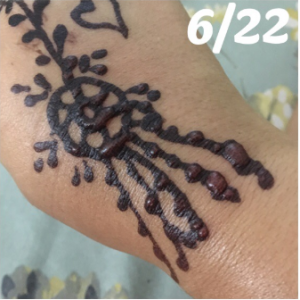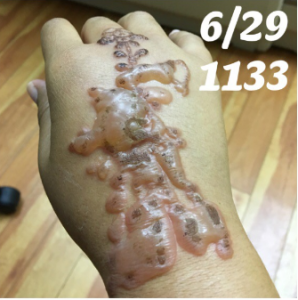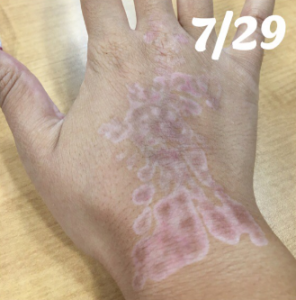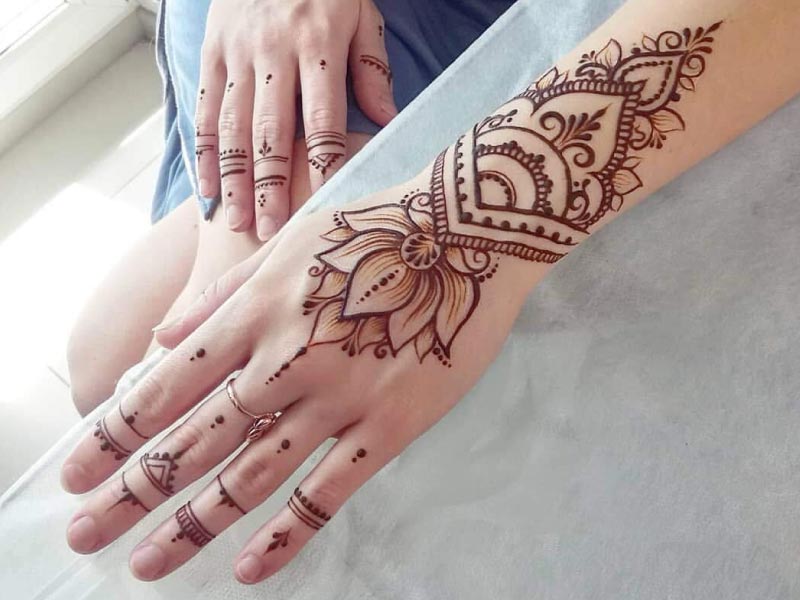Case Presentation
A 30 year old female who presented to my dermatology clinic for a blistering rash at the site of a recent henna tattoo. Three weeks prior to her visit, the patient had a black henna tattoo applied to her right hand while in Egypt. Two days after the tattoo was placed, she began to develop small blisters within the boundaries of the tattoo. Over the course of the ensuing week the rash progressed to widespread blisters, the peak of the rash occurring about eleven days after tattoo application. The patient reported pain, itch and a burning sensation at the site of the tattoo reaction. She never had a similar reaction in the past. With the use of high potency steroid cream she eventually experienced resolution of the symptoms. The patient was also evaluated by Plastic Surgery who recommended the use of silicone sheeting for the left over scarring.



Allergic Contact Dermatitis from Henna Tattoo
Henna has been used for over 4000 years in Middle Eastern and Indian cultures as an agent to dye the hair, skin and nails. It is common for the hands and feet to be decorated with henna during weddings, celebrations and religious ceremonies. Henna is a dried and powdered extract derived from the leaves of the Lawsonia inermis plant. The active ingredient in henna, lawsone (2-hydroxy-1,4-naphthoquinone), has a strong attraction for proteins in the skin, making it an ideal agent for temporary body tattoos and as a dye for hair and nails. A reddish-brown color results when natural henna preparations interact with keratin. This unadulterated form of henna is often referred to as “red henna.” In order to darken the pigment and expedite drying time, pure henna may be mixed with para-phenylenediamine (PPD), yielding “black henna.” Although the combination of pure henna and PPD for the use of temporary tattooing is illegal in the United States, black henna tattoos are readily available as an alternative to permanent tattoos in many other parts of the world.
Pure or red henna is considered to be relatively safe, and despite its extensive use, very few reports of allergic reactions to pure henna exist. In contrast, there are many reports of allergic reactions to PPD. Patients who are allergic to PPD must be counseled to avoid PPD-containing substances such as dark hair dyes. Cross-reaction may also cause allergic reactions to natural rubber latex, azo dyes, thiurams, and certain sunscreens.
The time between application of the tattoo and the onset of symptoms is variable, but typically is about 8-14 days. The initial allergic response may present as a red to purple streaking, following the original design but this frequently becomes blistering. Healing time is often prolonged and the intense inflammation may lead to hyperpigmentation, scarring and even keloid formation.

